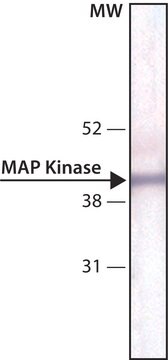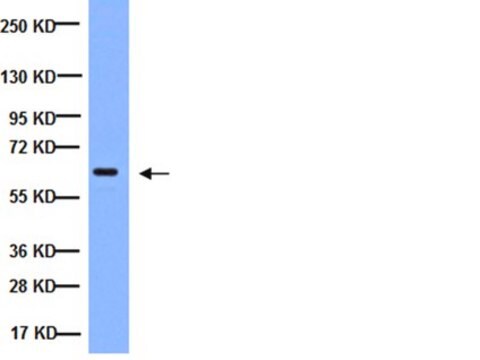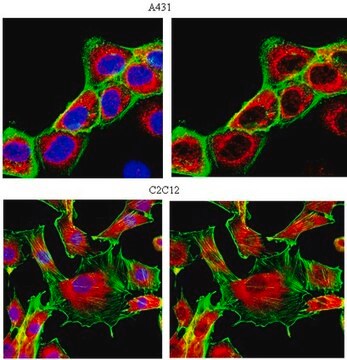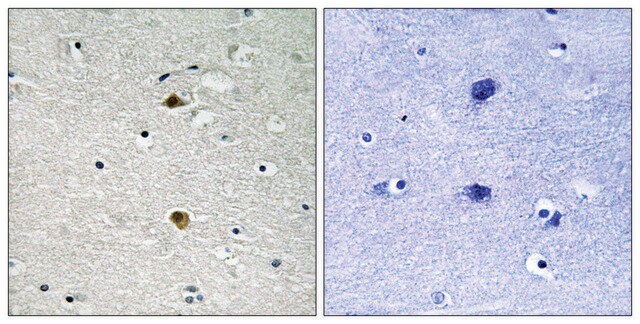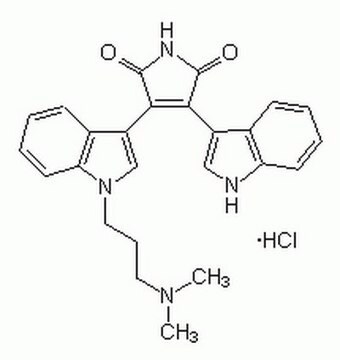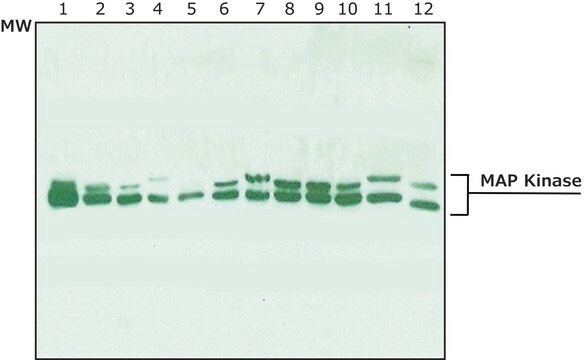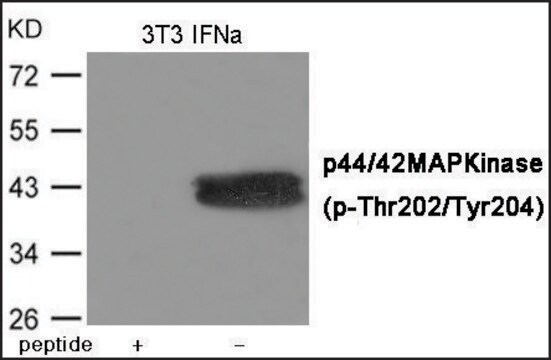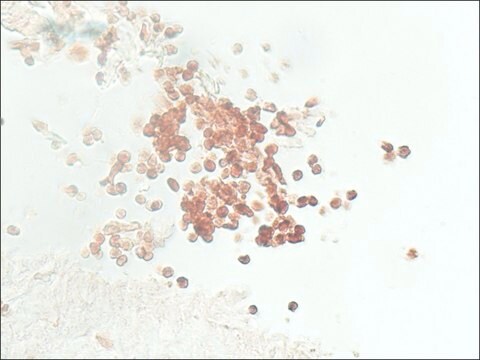M7431
Monoclonal Anti-MAP Kinase 2 (ERK-2) antibody produced in mouse
clone 1B3B9, purified immunoglobulin, buffered aqueous solution
Synonym(s):
Anti-ERK, Anti-ERK-2, Anti-ERT1, Anti-MAPK2, Anti-NS13, Anti-P42MAPK, Anti-PRKM1, Anti-PRKM2, Anti-p40, Anti-p41, Anti-p41mapk, Anti-p42-MAPK
About This Item
Recommended Products
biological source
mouse
Quality Level
conjugate
unconjugated
antibody form
purified immunoglobulin
antibody product type
primary antibodies
clone
1B3B9, monoclonal
form
buffered aqueous solution
mol wt
antigen 42 kDa
species reactivity
human, rat, mouse
technique(s)
immunoprecipitation (IP): 4 μg using denatured ERK-2 from a mouse 3T3 fibroblast lysate
microarray: suitable
western blot: 0.5 μg/mL using lysates from human A431 cells, mouse 3T3 fibroblasts or rat L6 cells
isotype
IgG2a
UniProt accession no.
shipped in
dry ice
storage temp.
−20°C
target post-translational modification
unmodified
Gene Information
human ... MAPK1(5594)
mouse ... Mapk1(26413)
rat ... Mapk1(116590)
General description
Anti-MAP Kinase 2 recognizes the 42 kDa MAPK2 encoded by the mapk gene. The antibody may weakly react with MAPK1 (ERK1) and only binds denatured MAP kinase.
Immunogen
Application
Physical form
Disclaimer
Not finding the right product?
Try our Product Selector Tool.
Storage Class Code
10 - Combustible liquids
WGK
nwg
Flash Point(F)
Not applicable
Flash Point(C)
Not applicable
Choose from one of the most recent versions:
Already Own This Product?
Find documentation for the products that you have recently purchased in the Document Library.
Our team of scientists has experience in all areas of research including Life Science, Material Science, Chemical Synthesis, Chromatography, Analytical and many others.
Contact Technical Service